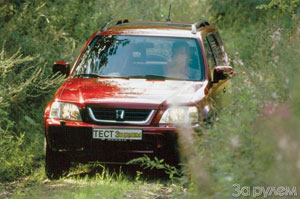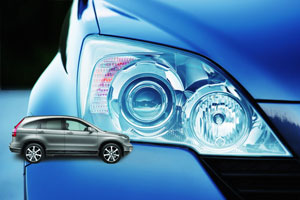Test drive Honda CR-V 2004-2007 SUV
Original
 Honda cars have always been associated with high-speed engines and gambling, but what is surprising: one of the most popular Honda models was by no means an athlete, but a reliable and practical CR-V crossover.
Honda cars have always been associated with high-speed engines and gambling, but what is surprising: one of the most popular Honda models was by no means an athlete, but a reliable and practical CR-V crossover. Among the Japanese automakers, Honda always stood apart. While others proceeded from the needs of the market, the Honda philosophy relied on the intuition of engineers, who, in turn, build cars for their pleasure. Civic Type-R, Integra, S2000 is only a small part of their materialized fantasies. Perhaps it is the sports image of the brand, as well as leadership in reliability ratings, the mass models of Honda make more and more popular. On the new, eighth, Civic, a queue for a year in advance has been formed, Accord is considered one of the most attractive options in her class, and the baby Jazz, for nothing, is almost like Civic, is willingly sold out in Europe. And in Russia, CR-V SUV has always been especially popular. His new, third, generation once again confirmed that even the Honda mass crossover has unique distinctive features.
The first Honda CR-V was announced in 1995 at the Tokyo Motor Show. In 1996, the crossover appeared in the salons of Japanese dealers, and a year later sales in Europe began. A simple look, with hard plastic in the cabin and a reputation as a car similar to Toyota Rav4, it still started very successfully. Restyling 1999 benefited him, and the new generation of CR-V, who replaced the first-born at the end of 2001, has seriously supplanted the Rav4 market position. In 2005, planned facelift in 2005 brought not only fresh exterior details, but also a new engine with a 140-horsepower turbodiesel with the Common Rail fuel system. This 2.2-liter engine was the first in the history of Honda by a diesel engine of its own development. The first and very successful Europeans appreciated the efforts of the Japanese, and sales went up. For eleven years of the CR-V life cycle, about 2.5 million copies were sold, and 12,500 of them dispersed in Russia. A good result, but Toyota tried even more. At least our market accepted RAV4 with considerable enthusiasm.
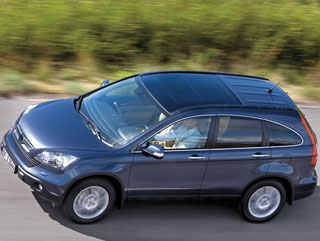 Style and dynamics
Style and dynamics I do not think that the reason is the technical superiority of RAV4. In the area of \u200b\u200bengineering, Honda has always been very strong. Just the main question of what the car should be, Toyota does not ask its engineers, but to consumers. Who pays is the master. And if so, why don't Honda ask your customers about their car dreams? What did the fathers of families and their spouses in the previous CR-V lack? How do they see the new CR-V so as not to prefer it to the new RAV4? It seems that the answers are on the surface. First, appearance. We are not indifferent to what the car looks like, which will have to look at three credit years. Therefore, Honda designers tried to make the CR-V look more solid, thorough and at the same time dynamic. Most likely, they began with the design of the front part, because it was the front of them that turned out to be the most expressive. A relief bumper with a smiling radiator grille, a confident and slightly playful look of the head optics, the wedge -shaped hood even the Acura RDX contamen does not look so attractive, not to mention the competitor from Toyota. The car is decorated with slightly swollen wheel arches, elegant side lines and chrome door handles. True, the oval, in which the side windows are enclosed, signed up for the company's sharp faces not entirely in place. And the view from the back spoils the stamping on the lid of the trunk. The Japanese were overdoed! Although, on the other hand, how often are cars with an extraordinary appearance on the roads?
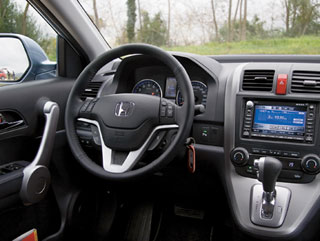 Contrary to the current trend towards an increase in the dimensions of each subsequent model of one family, the new CR-V became slightly smaller than its predecessor. The length decreased by 105 mm, a height of 30 mm, and the wheelbase became less by 10 mm. But the crossover became wider by 35 mm, the center of gravity decreased by 25 mm, and the track of the front and rear wheels increased by 25 and 5 mm, respectively. Such changes say only one thing: the new CR-V should stand on the road as a glove. The better controllability is also facilitated by the increased body hardness of the body, which is now 57% made of high -strength steel. And what is actually?
Contrary to the current trend towards an increase in the dimensions of each subsequent model of one family, the new CR-V became slightly smaller than its predecessor. The length decreased by 105 mm, a height of 30 mm, and the wheelbase became less by 10 mm. But the crossover became wider by 35 mm, the center of gravity decreased by 25 mm, and the track of the front and rear wheels increased by 25 and 5 mm, respectively. Such changes say only one thing: the new CR-V should stand on the road as a glove. The better controllability is also facilitated by the increased body hardness of the body, which is now 57% made of high -strength steel. And what is actually? Honda CR-V confidently holds a straight line and dashingly dies into turns. The rolls are small, the moment of disruption in the skid arises later and softer than that of the previous CR-V, and in general it is nice to drive a car. The hand of those very engineers setting up the best sports Honda for public roads is felt even in a family crossover! Therefore, CR-V goes much more interesting than most classmates. At least, relatively smooth Spanish roads to his liking, but on the primer the reverse side of the chassis drives is manifested: the suspension reacts harshly to the flaws of the road, and the work of the front McPherson is significantly transmitted to the steering wheel. So the new Honda CR-V is another car where comfort is sacrificed to illegal handling. However, some suspension rigidity is felt only at high speeds, to which you still need to accelerate
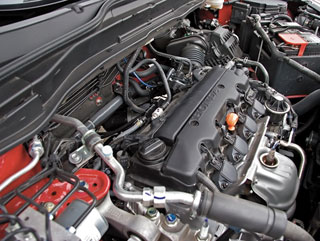 The new 2-liter I-VTEC engine has the same power as the predecessor, but the speed has increased. Maximum 150 hp They are achieved at 6200 rpm, and 190 nm are available at 4200 rpm. So the engine comes to the top? By no means! After 4000 rpm, he pulls as smoothly as at 2000 rpm, filling the salon with a slightly annoying hum. As a result, the speaker is not impressive. But the modest fuel consumption is pleasing: per 100 km of movement in the torn rhythm I-VTEC consumes approximately 10.511 liters of fuel. Lempting! But it would be even more tempting if CR-V was more dynamic. Honda claims that the new CR-V with a 2-liter engine and a 6-speed manual gearbox accelerates to the first hundred in 10.2 s, but it seems that acceleration lasts longer. In addition, in Russia, versions with an automatic machine that worsen the dynamics for another couple of seconds will be in great demand. Yes, and a new 5-band automato is working without much enthusiasm: the transmission turned out to be excessively stretched, and their change occurs with some delay. Here mechanics is a completely different matter! Quickly, clearly and the moves are small. She would have a better engine in a couple, but a 2.4-liter unit is available only for the Japanese and American markets. The new turbodiesel is also not for Russia, but all -wheel drive, as before, is included in the standard equipment. Moreover, the rear wheels are connected only in the case of the front slipping, and even then more than 35% of the power is not supposed to be.
The new 2-liter I-VTEC engine has the same power as the predecessor, but the speed has increased. Maximum 150 hp They are achieved at 6200 rpm, and 190 nm are available at 4200 rpm. So the engine comes to the top? By no means! After 4000 rpm, he pulls as smoothly as at 2000 rpm, filling the salon with a slightly annoying hum. As a result, the speaker is not impressive. But the modest fuel consumption is pleasing: per 100 km of movement in the torn rhythm I-VTEC consumes approximately 10.511 liters of fuel. Lempting! But it would be even more tempting if CR-V was more dynamic. Honda claims that the new CR-V with a 2-liter engine and a 6-speed manual gearbox accelerates to the first hundred in 10.2 s, but it seems that acceleration lasts longer. In addition, in Russia, versions with an automatic machine that worsen the dynamics for another couple of seconds will be in great demand. Yes, and a new 5-band automato is working without much enthusiasm: the transmission turned out to be excessively stretched, and their change occurs with some delay. Here mechanics is a completely different matter! Quickly, clearly and the moves are small. She would have a better engine in a couple, but a 2.4-liter unit is available only for the Japanese and American markets. The new turbodiesel is also not for Russia, but all -wheel drive, as before, is included in the standard equipment. Moreover, the rear wheels are connected only in the case of the front slipping, and even then more than 35% of the power is not supposed to be. FROM
 emery in a row
emery in a row The new CR-V caused almost the same associations as the new Legend: an excellent chassis tuned for fast driving, and a calm, balanced engine. Another model built in accordance with the same concept? It turns out that way. Moreover, a comparison with the flagship Legend can be continued in the cabin. Farewell, boring interiors, trimmed with hard, plain plastic! The new Honda CR-V inside looks no worse than outside. The eye is pleased with the instrument panel with volumetric dials and the on -board computer display, the embossed hub of the steering wheel and the central console. Moreover, the materials of the finish are good not only by eye, but also to the touch. Ergonomics are also at a height, and thanks to the wider front chairs and increased range of adjustments in the driver's place, it will be convenient for a person of any complexion. Also in CR-V there are more places for storing all sorts of little things, a Panorama glass roof with two sections of 750 mm wide and 354 mm long appeared, and the space in the luggage compartment can now be equipped with your taste using an additional removable shelf. So the new CR-V has retained the family purpose of its predecessors. Only this one, the third in a row, became much prettier, more pleasant in management and safer. For example, the VSA system is included in standard equipment, and head headlights can change the direction of the light flow by 20 towards the turn. Unfortunately, the most advanced technologies (CMBS collision prevention system and adaptive ACC control) are available only for the European market, but without them the new Honda CR-V is a very attractive choice. At least, it is not boring in it, and the reputation of Honda cars as one of the most reliable inspires confidence in the future.
Technical characteristics Honda CR-V 2.0
Dimensions, mm 4530x1820x1810
Base, mm 2620
Engine type gasoline in a row 4-cylinder
Working volume, cubic meter. SM 1997
Max. Power, L.S./rpm 150/6200
Max. moment, nm/rpm 192/4200
Mechanical transmission 6-speed
Or automatic 5-band
Max. Speed, km/h 190/177
Tires 225/65 R17
Acceleration time 0-100 km, with 10.2/12.2
Fuel consumption (average), l/100 km 8.1/8.2
Tank volume, l 58
Stanislav Goncharenko
Photo by the author and the manufacturer
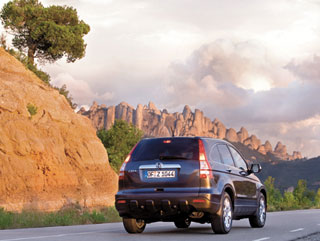
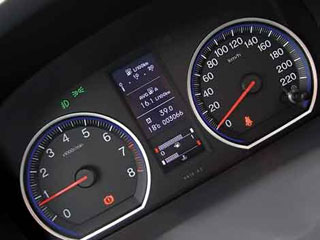
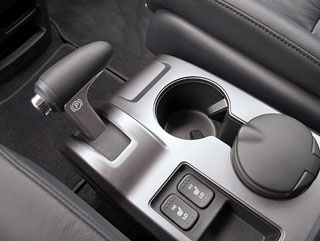
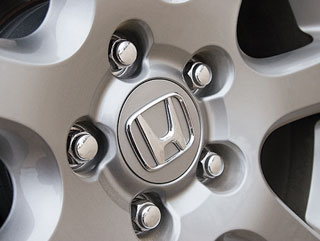
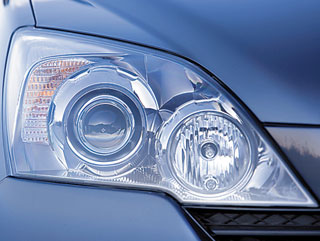
Source: Avtopanorama magazine











